The first 100 years of 20 Grove Street
| Published: 12-30-2019 9:23 PM |
Many people living and working in Peterborough today may not realize the office building 20 Grove Street was built specifically for the American Guernsey Cattle Club. With the iconic downtown Peterborough office building reaching its 100th anniversary this year we decided to take a look back.
Though it has been known as the Guernsey Building or “Cow Palace” for much of its 100-year-history, 20 Grove Street was only home to the Cattle Club for its first 32 years. In the proceeding 68 years it has been home to various other businesses. New Hampshire Ball Bearing and Cobblestone Publishing have occupied the building at different times. Jump forward and 20 Grove Street remains a business hub in Peterborough with numerous occupants today.
Many longtime residents still refer to 20 Grove Street as the Guernsey Building, which confuses newcomers who only know 70 Main Street as the Guernsey Building. Currently the largest office building in downtown Peterborough, 70 Main Street is currently named the Guernsey Professional Building in a nod to its history that ties it to the Cattle Club as well. It was constructed in 1950 for the American Guernsey Cattle Club and by 1951 the Cattle Club’s work of housing the genealogies of tens of thousands of Guernsey cows and bulls had entirely shifted to the newly constructed 70 Main Street. It too is now a multi-tenant commercial office building.
Construction began on 20 Grove Street in 1917 with the central and south wings of its new office at the corner of Grove and School streets completed in 1919. The building was created to be the headquarters of the American Guernsey Cattle Club and played a vital role in its rise in the early 1900s.
The club was established to record and keep track of cattle imported from the Island of Guernsey at a time when verified pedigree increased the value of the animals. The 20 Grove Street headquarters bolstered the breed and established the “Golden Guernsey Products” trademarked products.
There was already a building on site but it was moved to 51 Grove Street – where it has ever since been a residence – to make way for the American Guernsey Cattle Club Building designed by architect B.F. Russell.
According to the Monadnock Center for History and Culture after the Cattle Club moved out of 20 Grove in 1951 it has been home to the following:
■1951-57 NH Ball Bearing
Article continues after...
Yesterday's Most Read Articles
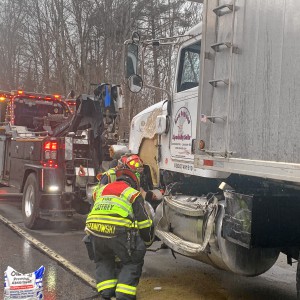 UPDATE: Drivers identified in Jaffrey dump truck crash
UPDATE: Drivers identified in Jaffrey dump truck crash
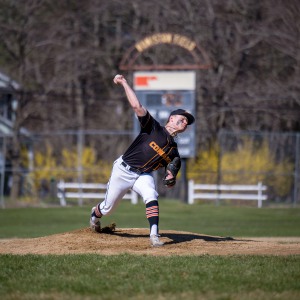 Conant baseball shows its strength in win over Mascenic
Conant baseball shows its strength in win over Mascenic
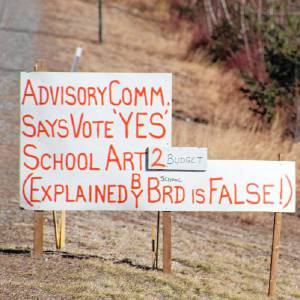 Group looks to close divide in Mascenic district
Group looks to close divide in Mascenic district
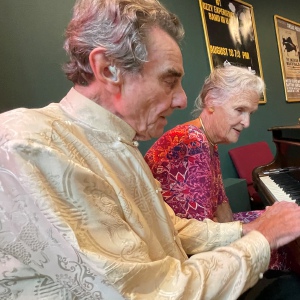 Bernie Watson of Bernie & Louise dies at 80
Bernie Watson of Bernie & Louise dies at 80
 Rindge Recreation Department organizes a trip to Converse Meadow
Rindge Recreation Department organizes a trip to Converse Meadow
 Scott Bakula starring in Peterborough Players’ ‘Man of La Mancha’
Scott Bakula starring in Peterborough Players’ ‘Man of La Mancha’
■1957-1971 NH Ball Bearing Research Center
■1957-1983 Micro Ball Co. (owned by NHBB)
■1974-1978 Pawprints Greeting Cards
■1983-89 Tucker Anthony & R L Day
■ 1984-89 Cobblestone Publishing
*plus various small businesses – accountants, a barber, insurance, etc.
The Monadnock Ledger moved into the building in 1990 and has called it home ever since.
Carl Amos Johnson, current owner of 20 Grove Street, said moving his business Grove Street Fiduciary, LLC into the building back in 2014 was “a great decision.”
“Moving back to the village of Peterborough fit our values and has completely increased our feeling of community. Everyone belongs to some sort of community somewhere and if they do not, they will eventually seek out that experience, because having a sense of belonging is a basic human need. The added benefit was that we were able to move into one of the most beautiful and historic buildings in Peterborough,” Johnson said.
Over the past few years Johnson has been renovating the inside of the building as well as working to restore the front lawn as it had been originally 100 years ago.
“It is really satisfying to see families enjoying the open space grass for a picnic or parade and employees relaxing with a coffee or a book at one of the bistro tables out front. The offices on the inside were also renovated by several local craftsmen led by Chris Jutras of Dublin. The building is now completely occupied by a variety of professional businesses serving our community,” he said.
Following a meeting of interested farmers in Farmington, Connecticut, in early 1876 and the importation of 14 animals from the Island of Guernsey later in the year, the American Guernsey Cattle Club was formerly organized Feb. 7, 1877, at the Astor House in New York City by a group of breeders from Massachusetts, Connecticut, New York, New Jersey and Pennsylvania. One of the main purposes was to publish a Herd Book to record animals whose ancestry could be traced to the Island of Guernsey, one of the Channel Islands between England and France. There were at the time many descendants of imported animals in this country but in many cases pedigrees could not verified.
When the first Secretary of the American Guernsey Cattle Club – Edward Norton of Farmington, Connecticut – died in 1894 there were about 11,000 recorded animals. That is when William H. Caldwell, an Assistant Professor of Agriculture at Pennsylvania State College in charge of the dairy and dairy stock work, was chosen to be the new secretary. In 1893, he had been in charge of the Guernsey herd at the Chicago World’s Fair. Caldwell moved Cattle Club headquarters from Farmington, Connecticut to his hometown of Peterborough where it was located in a room at his farm and residence on Old Dublin Road. He established a better card and record file system, established a quarterly publication, the “Guernsey Breeders’ Journal,” and spent much time presenting the merits of the breed to the public. In 1911 the Journal became a monthly publication. At the Pan American Exposition in 1901 butter made from the milk of the exhibition herd of Guernseys took first prize for quality butter.
In 1911, The American Guernsey Cattle Club was incorporated by act of the Connecticut Legislature. The Charter stated the purpose of the Club was to “guard the purity of the breed and promote the best interests of the breed of Guernsey cattle, by such lawful means as shall he expedient and proper.”
In 1895 Caldwell began hiring clerical help in Peterborough, and the girls would walk from town to his home. By 1911 there were 14 clerks and the ell of his house had been converted to a work area, so a dwelling was purchased at the corner of Grove and School Street to be used as an office for the club. In 1918 the north wing for a new building on the site was completed. Karl B. Musser took over as Secretary when Caldwell retired in 1923.
Following some early efforts around 1919 and 1920 to assist breeders in marketing their milk, a shipment of Guernsey milk from Fox Run Farm in Peterborough to Boston was made in 1923 or 1924. This established the milk in interstate commerce and resulted in a copyrighted label and trademark, “Golden Guernsey Products.” In 1934 Golden Guernsey, Inc. was formed to supervise the sale of milk under the trademark and a fee was charged for use of the label. Various state Guernsey Associations became agents, with marketing and other assistance coming from the national office in Peterborough. Apparently the slogan “America’s Table Milk” was never officially used in the copyright label although this was one of Musser’s favorites.
Musser established an Information and Service Department, later named the Promotion Division. This rather aggressively promoted the virtues of Guernsey Cattle and their milk. The Promotion Division was active in sending three Guernsey cows to Antarctic with Admiral Richard E. Byrd on the 1928 to 1930 expedition. One cow gave birth to a calf en route and the cows were exhibited on their return.
In the 1930s, during the Great Depression the Cattle Club was the town’s largest employer and many of the women employed helped support their husbands who were without work. Presumably in a moment of irritation because his trained women were leaving their jobs to get married, leave town or to have children, around 1940 Musser decided to attract young men from the area to work for the Club. Prior to World War II he hired a few and some of them later became executives without agricultural backgrounds. After the war he tried again and hired about 20. Some rose to executive positions but most were not adaptable to clerical positions and either transferred to other jobs in the Club, such as an offset printing division which printed the Club’s forms and promotional brochures, or left for higher paying jobs in industry.
Around 1947 Robert B. Stewart, a native of Iowa, became Assistant Secretary and succeeded Musser in 1955.
By the late 1940s the American Guernsey Cattle Club and Golden Guernsey, Inc. had outgrown its headquarters at Grove and School streets and were renting space in nearby buildings. And so the building at 70 Main Street was constructed, a four-story steel-framed brick building. It was first occupied about Jan. 1, 1951. The Club was then employing about 180 people in Peterborough, with about 20 or more in field offices throughout the United States. Various state associations employed another 39 to 40 people. This was perhaps the high point of employment.
Within a few years after the move into 70 Main Street the Cattle Club began a slow decline. It was becoming too expensive to record daily milk weights by hand and a computer was installed in the home office. Then, too, Americans were becoming diet-conscious and turning away from high-fat milks and other fatty foods. By 1982 there were only about 40 to 49 employees and plans were made to move to Columbus, Ohio, in January 1983 to occupy a building with the American Jersey Cattle Club, ending Peterborough’s history with the American Guernsey Cattle Club.
The American Guernsey Association remains in Ohio where it continues to serve Guernsey breeders and publish the Guernsey Breeders' Journal. The history and archive photos for this article were provided by the Monadnock Center for History and culture in Peterborough.

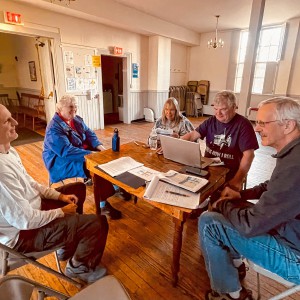 Greenfield Community Power Committee approves identifying possible suppliers
Greenfield Community Power Committee approves identifying possible suppliers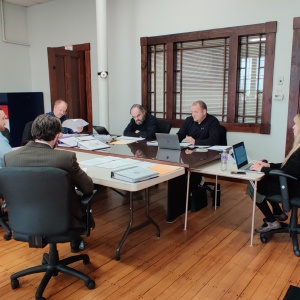 Wilton Select Board discusses options for ARPA funds
Wilton Select Board discusses options for ARPA funds
